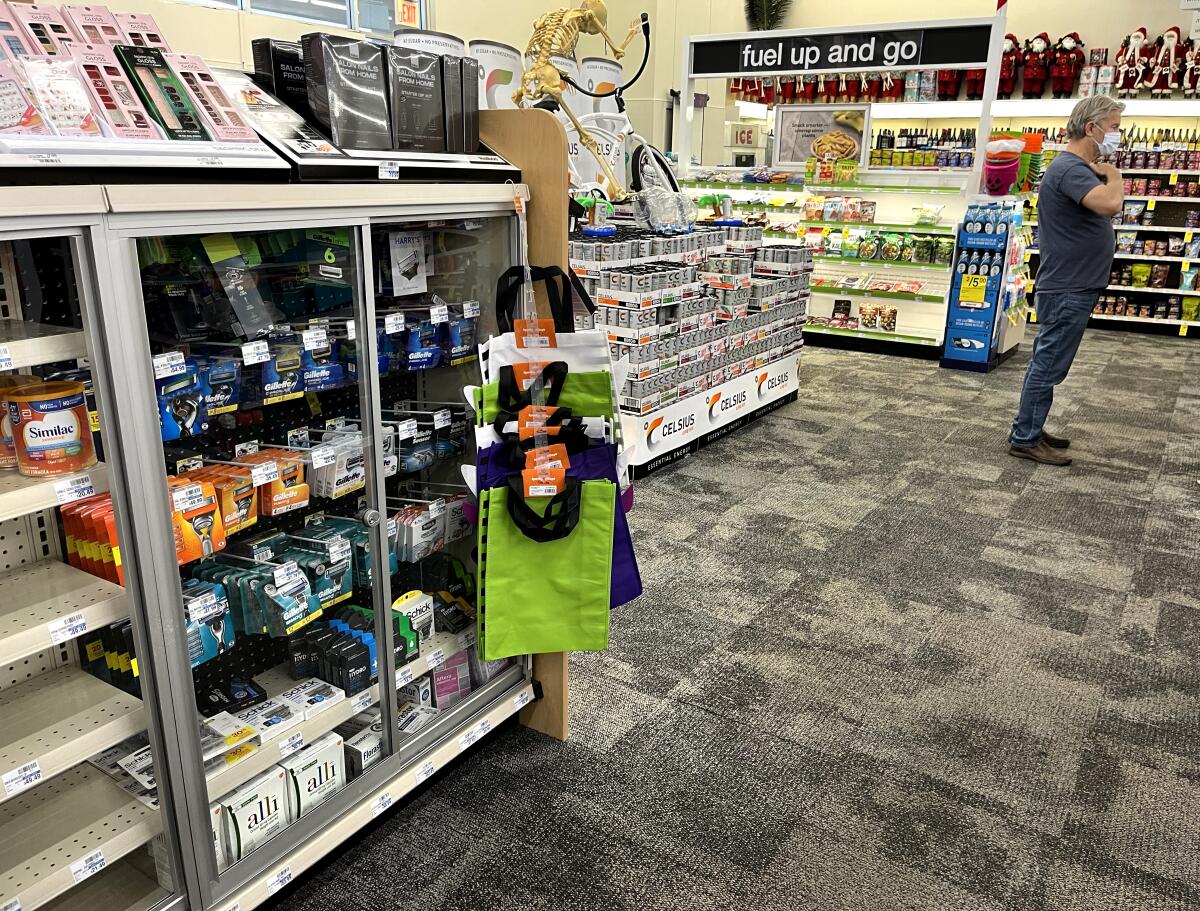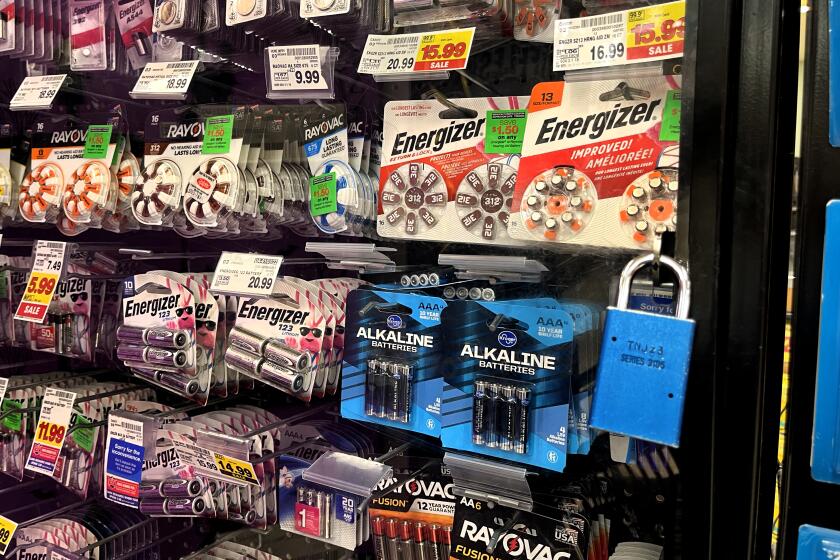‘Unprecedented’ theft contributed to $112 billion in retail losses last year

- Share via
Losses from retail crime ticked up in 2022, causing many retailers across the country to change the way they do business, according to a survey released on Tuesday by the National Retail Federation.
“Retailers are seeing unprecedented levels of theft coupled with rampant crime in their stores, and the situation is only becoming more dire,” David Johnston, NRF’s vice president for asset protection and retail operations, said in a statement.
The annual survey by the trade group collected insights from 177 retail brands across 28 different retail sectors — including apparel, jewelry, grocery, and department stores — and accounted for more than 97,000 retail locations and $1.6 trillion in annual retail sales.
Shrink — a measurement of lost inventory — for total retail sales in 2022 reached $112.1 billion, up from $93.9 billion in losses in 2021, according to the survey.
It’s worth noting that when retail sales go up, as they did in 2022, shrink also tends to rise. The average shrink rate in the 2022 fiscal year was 1.6%, up from 1.4% the year before. The latest figure is in line with shrink rates from 2019 and 2020.
Retail theft is a major problem in California and the rest of the nation, merchants and law enforcement officials said. The state is trying something new.
Theft of all kinds accounted for 65% of retail shrink in 2022, similar to previous years.
External theft — including organized retail crime — caused 36% of losses, while employee theft caused 29%, the survey said. “Process, control failures and errors” caused 27%, while the final 7% was “other” or “unknown.”
Many retailers who participated in the survey said they had increased spending on loss prevention in 2022. Forty-six percent said they increased the use of third-party security personnel in their stores, and 34% said they “increased payroll to support their risk efforts.”
Fifty-three percent said they have increased, or are increasing, employee workplace violence training to mitigate the risk of violent encounters associated with theft or crime.
In-store violence is a top concern. Eighty-eight percent of retailers surveyed said that shoplifters were “somewhat more or much more aggressive and violent compared with one year ago,” according to the survey.
Industry groups and politicians are sounding alarms over the thefts. But in some cases, the statistics they cite are inflated or flat-out wrong.
“Far beyond the financial impact of these crimes, the violence and concerns over safety continue to be the priority for all retailers, regardless of size or category,” Johnston said.
Some businesses have taken more drastic measures to protect their assets or cut their losses. When asked if they had taken any specific actions “due to retail crime, social and/or physical disorder, or violence,” the survey found that 45% of retailers reduced their operating hours, 30% reduced or altered their in-store product selection and 28% said they were forced to close a store location. Target said on Tuesday it plans to close nine stores in major cities, including three in the San Francisco Bay Area, due to violence and theft.
Los Angeles was the metro area most affected by organized retail crime in the country, followed by San Francisco and Oakland, the report said. Houston and New York City ranked third and fourth, respectively.
The percentage of thefts caused by organized retail crime — burglary groups running sophisticated reselling enterprises — was not specified in the survey. Organized retail crime does not include one-off shoplifting, fraud or employee theft.
Some critics have said there is excessive attention on this type of theft. Despite the headlines they generate, gangs are not responsible for large numbers of retail losses.
Home Depot’s ex-CEO complained that retail theft is making the U.S. a ‘lawless society,’ but his company just paid millions to settle charges that it lawlessly cheated workers of pay.
In June, Atty. Gen. Rob Bonta announced a new initiative to crack down on organized retail crime in California. More than a dozen retailers and online marketplaces, including Target, Albertsons and Amazon, signed a pledge that “increases information sharing” among law enforcement, retailers that experience theft and online marketplaces where stolen merchandise can be resold. The partnership is designed to aid in the prosecution of organized retail crime.
Bonta emphasized that the agreement does not target traditional shoplifting.
“It’s not about the occasional smash-and-grab at the local big-box store,” he said at a news conference announcing the agreement. “This is about a multibillion-dollar criminal enterprise — criminal schemes that are complex, orchestrated and incredibly organized.”
More to Read
Inside the business of entertainment
The Wide Shot brings you news, analysis and insights on everything from streaming wars to production — and what it all means for the future.
You may occasionally receive promotional content from the Los Angeles Times.













